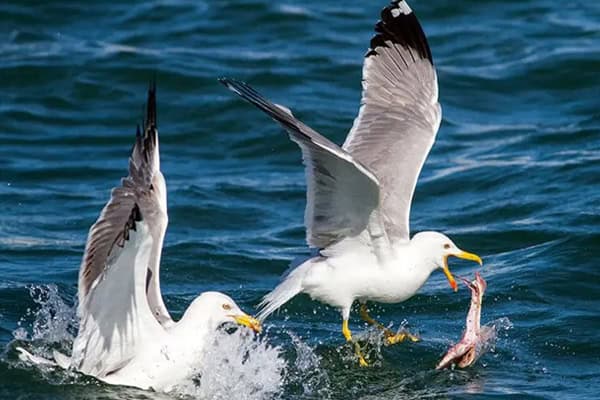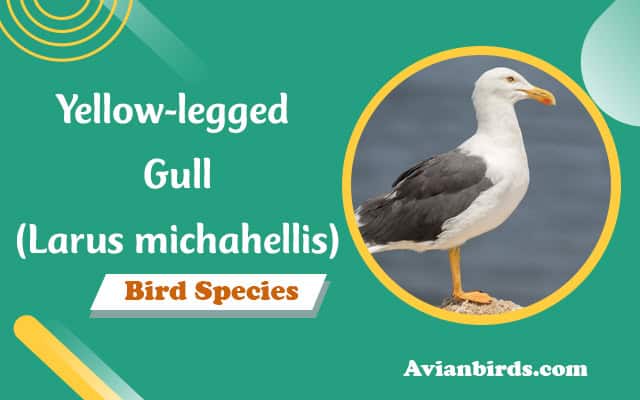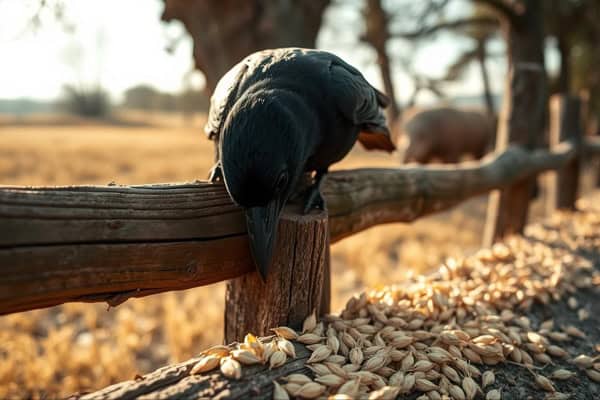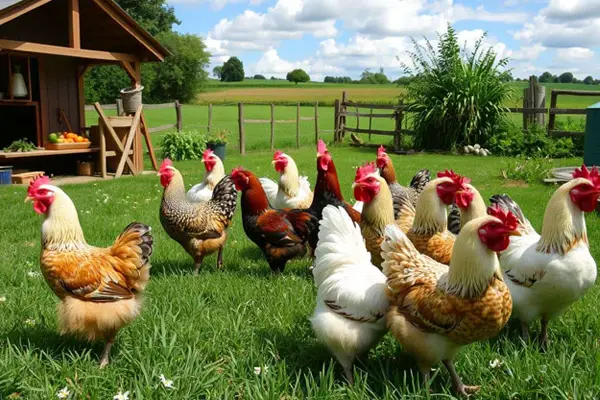Yellow-legged Gull (Larus michahellis)
The yellow-legged gull, scientifically known as Larus michahellis, is a striking bird that commands attention wherever it roams. With its bold personality and distinctive features, this gull has become a familiar sight along coastlines and urban areas across southern Europe and beyond. Whether you’re strolling along the beach or enjoying a day by the harbour, encountering a yellow-legged gull can be an exciting moment for birdwatchers and casual observers alike. Join us as we delve into the fascinating world of this remarkable species—exploring its physical traits, habits, habitats, and much more!
Physical characteristics and identification
The yellow-legged gull, known scientifically as Larus michahellis, boasts striking features that make it easily identifiable. Adults typically showcase a robust body with long wings and a distinctive grey mantle.
Their heads are white and adorned with dark spots during the breeding season. The bright yellow legs give this bird its name and stand out against the backdrop of its plumage.
Another notable characteristic is their powerful beak, which has a prominent black spot near the tip—an unmistakable mark for identification. Juvenile birds present a different picture; they have mottled brown feathers that gradually change as they mature.

Sizes can range from 50 to 60 centimetres in length, making them one of the larger seagull species in Europe. Their wingspan can reach up to 1.5 meters, allowing them graceful flight over coastal waters.
Habitat and Distribution
The yellow-legged gull, scientifically known as Larus michahellis, thrives in diverse environments. You can find these birds along coastlines and inland waters alike. They are often spotted near harbours, beaches, and coastal cliffs.
This species is predominantly found in the Mediterranean region but has expanded its range significantly. They have adapted well to urban areas, making cities an integral part of their habitat.
During migration seasons, yellow-legged gulls travel across various European countries. Their presence extends from Portugal to Turkey, showcasing their versatility in choosing habitats that provide food and nesting sites.
In search of food or suitable breeding grounds, these gulls often venture inland towards lakes or rivers. Their adaptability plays a crucial role in their survival across different landscapes.
Diet and Feeding Behavior
The yellow-legged gull (Larus michahellis) is an opportunistic feeder, displaying remarkable adaptability in its diet. These birds thrive on a diverse range of food sources, from fish and crustaceans to scraps found along coastal areas.
Their scavenging behaviour often leads them near human habitats, where they eagerly search for discarded food. This resourcefulness allows them to capitalize on any available nourishment, making them proficient at foraging.

Yellow-legged gulls also exhibit social feeding habits. They can often be seen congregating in large groups when hunting or feeding, which enhances their chances of spotting potential meals. Their keen eyesight helps them detect prey both above water and on land.
During the breeding season, these gulls shift their focus towards more specific diets that include small chicks or eggs from other seabirds. This strategic variation ensures they meet the nutritional needs required for raising their young successfully.
Breeding and Nesting Habits
The breeding season for the yellow-legged gull typically begins in late spring. During this time, these birds engage in elaborate courtship displays to attract a mate. Their vocalizations become more pronounced, and they often perform aerial acrobatics.
Nesting usually occurs on coastal cliffs or islands that provide some protection from predators. These gulls prefer locations with good visibility and easy access to food sources.
Their nests are constructed using various materials such as grass, seaweed, and even discarded human items. Females lay between two to four eggs that exhibit mottled brown colouration, helping them blend into their surroundings.
Both parents take part in incubating the eggs for about 30 days. After hatching, chicks are precocial; they can leave the nest shortly after birth but remain reliant on their parents for food until they develop sufficient flying skills.
Threats to the Species
The yellow-legged gull, or Larus michahellis, faces several significant threats in its natural environment. Habitat loss is a primary concern. Urban development along coastlines reduces available nesting sites and foraging areas.
Pollution also poses serious risks. Plastic waste can be ingested, leading to health issues for these birds. Chemicals in the water affect their food sources, disrupting entire ecosystems.
Climate change adds another layer of threat. Rising sea levels and extreme weather events impact breeding success and food availability.
Additionally, hunting and egg collection have historically contributed to population declines. Despite legal protections in many regions, illegal activities still occur.
Competition with other seabird species for resources further complicates survival efforts. As human activity increases along coastlines, the future of the yellow-legged gull hangs precariously in balance.
Conservation Efforts
Conservation efforts for the yellow-legged gull, or Larus michahellis, focus on habitat protection and sustainable practices. These birds thrive in coastal areas, which are often threatened by urban development and pollution.
Organizations work tirelessly to raise awareness about their plight. Educational programs help local communities understand the importance of preserving these habitats.
Monitoring populations is crucial as well. Scientists use various methods to track yellow-legged gull numbers and assess their health. This data guides conservation strategies effectively.
Collaborative initiatives between governments and NGOs also play a key role in safeguarding breeding sites. By designating protected areas, they create safe havens for nesting.
Public participation is encouraged too! Birdwatchers and nature lovers can contribute valuable sightings that assist researchers in understanding population dynamics better. Through collective action, we can ensure a brighter future for this remarkable species.
How to Spot a Yellow-legged Gull in the Wild
Spotting a yellow-legged gull can be an exciting challenge for birdwatchers and nature enthusiasts alike. Look for them along coastlines, harbours, or even urban areas near water bodies.
Their distinctive features make identification easier. Observe their stout bodies, long wings, and strong legs with a bright yellow hue. The adult’s head is strikingly white with a dark mantle during the breeding season.
Keep your eyes peeled for their unique vocalizations, too—sharp calls that are quite different from other gulls in the area. They often gather in flocks, so watching one might lead you to discover more nearby.
The best times to observe these birds include early morning or late afternoon when they’re most active while searching for food. Patience is key; remain quiet and still to enhance your chances of spotting this fascinating species in its natural habitat.
Role in the Ecosystem
As scavengers, Yellow-Legged Gulls play a crucial role in their ecosystems by helping to control waste and reduce the spread of disease. By feeding on carcasses and other organic materials, they contribute to the breakdown of decaying matter, which benefits the overall health of their environment.
Differences Between Similar Species
The Yellow-Legged Gull is often confused with the Herring Gull and Lesser Black-Backed Gull, but careful observation of leg colour, size, and beak shape can help distinguish these species. The yellow legs and sharper beak of the Yellow-Legged Gull are its most obvious distinguishing features.
Fun Facts about the Yellow-legged Gull
The yellow-legged gull, or Larus michahellis, showcases fascinating behaviours that intrigue bird watchers and enthusiasts alike. These birds are known for their striking intelligence. They can solve problems and learn from past experiences, making them quite adaptable in various environments.
Their vocalizations are equally captivating. The distinct calls of the yellow-legged gull can be heard echoing along coastlines, adding a unique soundtrack to their habitats.
Did you know that these gulls often engage in social behaviour? They form tight-knit groups when feeding or resting, showcasing a strong sense of community among themselves.
During migration periods, they can travel thousands of kilometres. This remarkable endurance highlights their resilience as they navigate across vast expanses of land and sea.
Despite being opportunistic feeders, they have a preferred diet rich in fish and marine invertebrates. Their keen eyesight aids them immensely while hunting for food!
~Read More🐦Related Articles~
- Florida Birds Of Prey
- How Long Do Chickens Live
- European Bee-Eater (Merops apiaster)
- Birds With Red Chests
- African Fish Eagle: All You Need to Know
- HAWKS IN TENNESSEE
Conclusion
The yellow-legged gull, or Larus michahellis, is a remarkable bird that holds its own in the diverse world of avian species. From its striking physical features to its adaptable nature, this gull has made a significant mark across various habitats. It thrives along Mediterranean coasts and even urban areas, showcasing resilience in the face of change.
Understanding their diet reveals their opportunistic feeding behaviour. They are not picky eaters, which allows them to flourish in both natural and human-altered environments. Their breeding habits demonstrate strong familial bonds as they raise chicks with care on rocky cliffs or sandy beaches.
Despite their adaptability, yellow-legged gulls face threats from habitat loss and environmental changes. Conservation efforts play a crucial role in ensuring their survival for generations to come. Through awareness and protection initiatives, we can all contribute to preserving these beautiful birds.
Spotting a yellow-legged gull can be an exciting experience for birdwatchers and casual observers alike. With keen observation skills and knowledge about their characteristics, anyone can enjoy watching these fascinating creatures glide through the sky.
Yellow-legged gulls are more than just birds; they symbolize resilience amidst challenges posed by changing ecosystems. As we continue our journey of discovery into the world of avifauna, keeping an eye out for Larus michahellis may lead you to appreciate the intricacies of nature even more deeply.
Frequently Asked Questions
Q1: What does a Yellow-Legged Gull eat?
Yellow-legged gulls are omnivorous, feeding on fish, crustaceans, small animals, and human food waste.
Q2: Where can I find Yellow-Legged Gulls?
They are commonly found around the Mediterranean, but can also be seen in parts of Western Europe, North Africa, and urban areas.
Q3: How can I identify a Yellow-Legged Gull?
Look for their bright yellow legs, yellow beak with a red spot, and their large size, which sets them apart from other gull species.
Q4: Are Yellow-Legged Gulls aggressive?
They can be assertive, especially when protecting their nests or scavenging for food in urban areas.
Q5: How long do Yellow-Legged Gulls live?
In the wild, they can live up to 15-20 years, though urban dangers may reduce their lifespan.
Q6: Do Yellow-Legged Gulls migrate?
Some populations are migratory, moving to warmer areas during winter, while others remain in their habitats year-round







